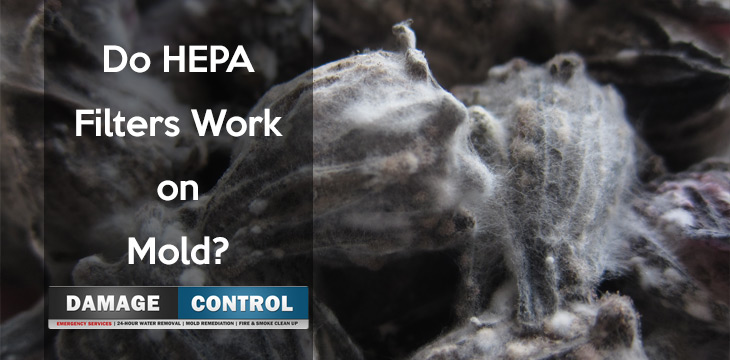Mold is common in many households and can cause various health problems. HEPA filters have been popularly used as a solution for household mold and problems. But the question is, will HEPA filters remove mold spores? Yes. HEPA filters can and will remove mold spores from the air. We use them with simple, yet effective commercial grade HEPA filter systems. We also use different types of air scrubbers in the mold removal and remediation process on a daily basis. We depend on this technology on most projects. They're a staple tool of the trade in our business.
What Are HEPA Filters?
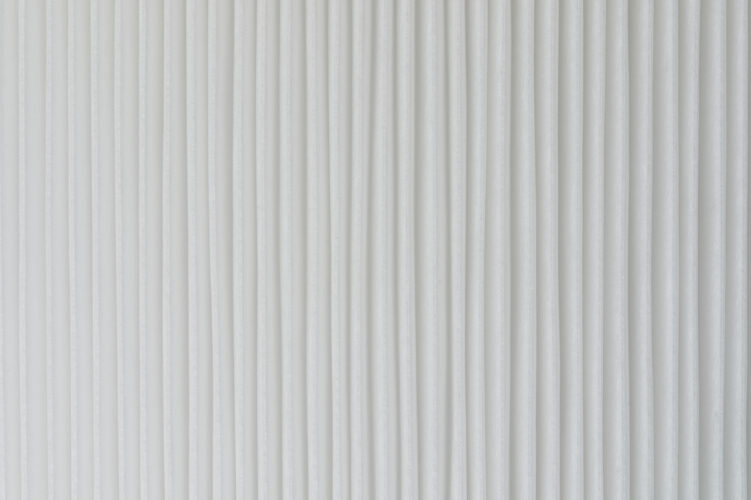
HEPA stands for High-Efficiency Particulate Air filters. They are made up of a dense layer of glass fibers arranged in a random pattern, which traps particles passing through it. These filters are used to clean the air and remove harmful particles such as dust, pollen, and pet dander. HEPA filters are commonly used in air purifiers, vacuum cleaners, and HVAC systems.
How Do HEPA Filters Work?
HEPA filters use a dense layer of glass fibers to trap particles. The fibers are arranged in a random pattern, creating a maze-like path for air. The particles in the air get trapped in the maze, which allows clean air to pass through.
Types Of Mold Spores
Mold spores are microscopic particles that are released by mold. There are various mold spores, including Aspergillus, Penicillium, Cladosporium, and Stachybotrys. Some types of mold spores can cause allergies, respiratory problems, and other health issues.
Can HEPA Filters Remove Mold Spores?
Yes, HEPA filters can remove mold spores. Mold spores range from 1 to 100 microns, and HEPA filters can trap particles as small as 0.3 microns. HEPA filters can trap airborne mold particles and spores and prevent them from being released into the air.
What Else Can Be Done To Prevent Mold Growth?
While HEPA filters can help prevent mold growth, other steps can be taken in order to avoid mold growth. These include:
- Reducing humidity levels in the home
- Fixing any leaks or water damage
- Properly ventilating bathrooms and kitchens
- Regularly cleaning and dusting the home
How To Choose The Right HEPA Filter For Mold?
When choosing a HEPA filter for mold, look for a filter with a MERV rating of 13 or higher. The MERV rating measures the filter's effectiveness at trapping particles, and a higher rating means better air filtration. Choosing the right size filter for the device it will use is also important.
What Are The Benefits Of Using HEPA Filters For Mold?
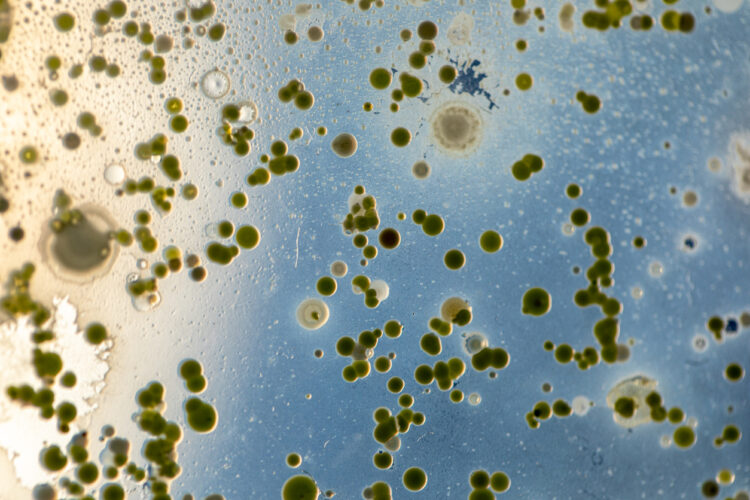
The benefits of using HEPA filters for mold include:
- Trapping mold spores and preventing them from being released into the air
- Improving indoor air quality
- Reducing the risk of mold-related health problems
- Removing other harmful particles from the air, such as pollen and dust
Are There Any Disadvantages Of Using HEPA Filters For Mold?
One of the disadvantages of using HEPA filters for mold is that they only trap mold spores and do not kill them. This means that the mold can still grow and spread if the source of the mold is not addressed.
Additionally, HEPA filters must be regularly maintained and replaced, which can be an added expense.
What Are The Maintenance Requirements For HEPA Filters?
HEPA filters must be regularly maintained to keep trapping mold spores effectively. This includes vacuuming or washing the filter regularly to remove trapped particles.
HEPA filters also need to be replaced when they become clogged or after a certain amount of time has passed.
Can HEPA Filters Completely Eliminate Mold Spores?
While HEPA filters can trap mold spores, they cannot eliminate them. Mold spores can still exist in other areas of the home, and the source of the toxic mold also needs to be addressed to eliminate the problem.
How Often Should HEPA Filters Be Replaced?
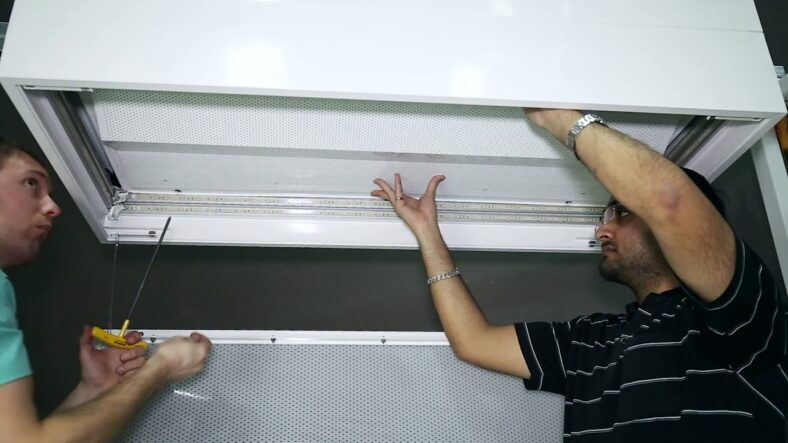
The frequency depends on how often they're used and how contaminated the air is. Generally, HEPA filters should be replaced every 6-12 months.
How To Clean HEPA Filters?
HEPA filters can be cleaned by vacuuming or washing them. To vacuum a HEPA filter, use a soft-bristled brush to remove the trapped particles gently. To wash a HEPA filter, rinse it with water and allow it to air dry completely before using it again.
What Is A True HEPA Filter?
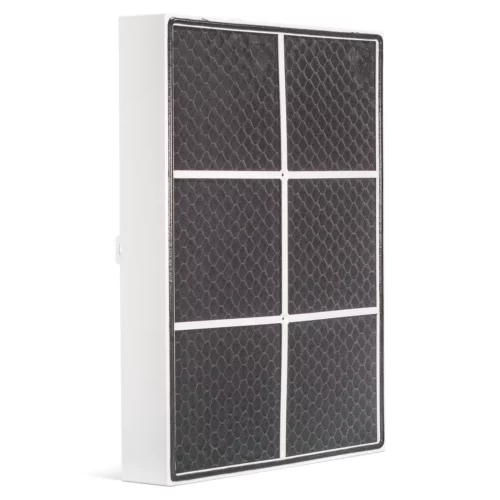
Have you ever wondered what makes a True HEPA filter so special? Let's dive in and uncover the mystery.
True HEPA (High-Efficiency Particulate Air) filters are the gold standard in air purification. But why? It's their superpower – trapping 99.97% of tiny airborne particles. Sounds impressive, right? But there's more to it.
Magic Behind The Name
True HEPA isn't just a fancy term. It denotes a stringent standard set by the U.S. Department of Energy (DOE). Only filters that capture at least 99.97% of particles as small as 0.3 microns get this badge of honor.
You might wonder, what's a micron? Simply put, it's tiny. For perspective, a human hair is about 50-70 microns thick. That's quite a contrast, isn't it?
Why “True” HEPA?
All HEPA filters are not created equal. In the marketplace, you'll find filters labeled ‘HEPA-type' or ‘HEPA-style.' Be wary, these are not the same as True HEPA.
True HEPA filters offer superior performance. They trap the smallest pollutants, including dust mites, pollen, and even tobacco smoke. This ensures cleaner, healthier air, essential for those with allergies or asthma.
Worth The Investment?
Absolutely! While True HEPA filters might be more expensive, they're worth every penny. Investing in a True HEPA filter is investing in your health. After all, isn't breathing clean air a top priority?
In summary, a True HEPA filter is a powerful weapon against tiny airborne particles that can harm your health. It's a small investment for a big improvement in air quality and, ultimately, in your life.
HEPA Vs. Other Filters
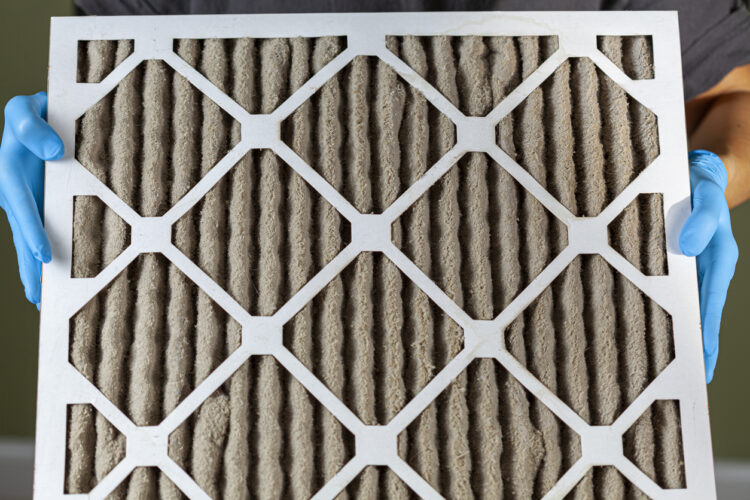
When it comes to air purification, the choice of filter can make a world of difference. So, what sets a HEPA filter apart from the rest? Let's delve into this head-to-head comparison.
True HEPA: The Champion
True HEPA filters are top-of-the-line and hard to beat when you have a mold problem. They're second in line with their unmatched ability to trap 99.97% of all airborne contaminants and particles as tiny as 0.3 microns. They can catch them all from dust, pollen, smoke, and mold spores.
Competitors: HEPA-Type & Other Filters
HEPA-Type filters may sound similar, but don't let the name fool you. They trap fewer particles and are not as effective against the smallest pollutants. The efficiency of these filters ranges from 85% to 90%, quite a step down from True HEPA's 99.97%. Talk about taking a bite out of your mold problem.
Other filters includeionic, activated carbon, and UV filters. While they each have their benefits, none match the overall performance of a True HEPA filter.
Ionic filters attract pollutants with electrically charged ions, but some release harmful ozone. Activated carbon filters are great for removing odors and gases but less effective against small particles. UV filters kill bacteria and viruses but are ineffective against non-living pollutants.
The Clear Winner: True HEPA
While other filters have their strengths, True HEPA stands apart for its exceptional particle-trapping efficiency. It's the go-to for those needing top-tier air purification, especially for allergy sufferers or those with respiratory issues.
In short, when it comes to keeping your air clean and healthy, True HEPA filters take the crown.
What is Clean Air Delivery Rate (CADR)?
You're out hunting for the perfect air purifier for mold, and stumble across the term CADR. But what does it mean? Let's clarify.
Clean Air Delivery Rate, or CADR, gauges an air purifier's effectiveness. It shows how quickly an air purifier can clean the air in a particular-sized room. Higher CADR equals faster cleaning.
Behind the Numbers
CADR values are measured in cubic feet per minute (CFM). These values indicate how many cubic feet of air an air purifier can clean in one minute for specific pollutants – typically, tobacco smoke, dust, and pollen.
Why CADR Matters
A higher CADR rating can mean quicker relief from allergies or asthma. It's especially crucial in environments where pollutants are continuously introduced.
Making Sense of CADR
CADR values best air purifiers vary based on the pollutant type. A purifier might have a high CADR for dust but a lower one for smoke. So, choose a purifier that tackles your specific needs best. Also, check if the CADR values are certified by the Association of Home Appliance Manufacturers (AHAM), as this ensures reliability.
In short, CADR gives you a clear picture of an air purifier's efficiency. The higher the CADR, the quicker and more efficient the air purification. It's a key factor to consider when choosing the right air purifier for your space.
How Do Air Purifiers Work?
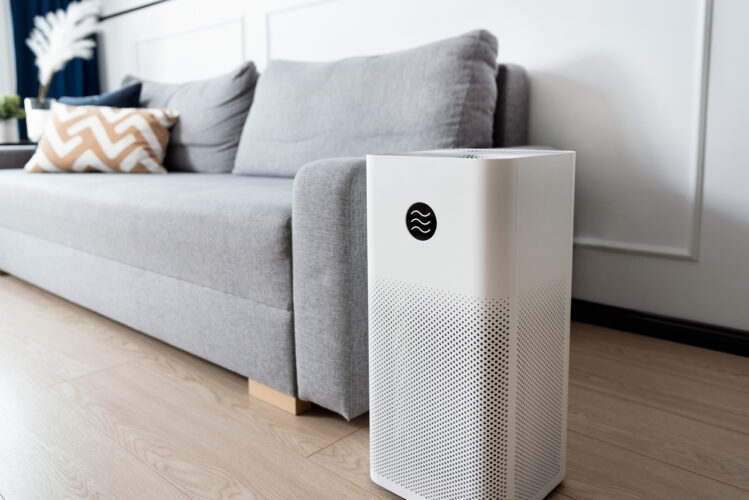
Ever pondered how an air purifier transforms polluted indoor air pollutants into clean, breathable air? Let's unveil the mystery of how these handy devices work.
Air purifiers function on a straightforward principle – suck other indoor air pollutants and in dirty air, filter out the pollutants, and blow out clean air. But, there's more to it.
Step 1: Drawing In Air
The journey of air purification starts with the fan. The best air purifier that's fan pulls in surrounding air, full of various pollutants.
Step 2: Filtering The Air
The drawn-in air then passes through a series of filters. Each filter specializes in removing a specific type of pollutant.
- Pre-Filter: This is the first line of defense, trapping larger particles like dust and hair.
- HEPA Filter: The star player, a HEPA filter, can capture up to 99.97% of particles as small as 0.3 microns, including pollen, mold spores, and pet dander.
- Activated Carbon Filter: This filter targets gases, odors, and volatile organic compounds (VOCs), which are smaller and more elusive than particles.
Some air purifiers also have UV lights to kill bacteria and viruses or ionic generators to enhance pollutant capture.
Step 3: Releasing Clean Air
After passing through these filters, the now clean air is released back into the room.
It's worth noting that this process is continuous. The air purifier constantly cycles air through its filters, progressively reducing the concentration of pollutants in the room.
In summary, air purifiers work by continuously sucking in dirty air, trapping pollutants in various filters, and pumping out clean air. They're your home's silent guardians, ensuring you breathe healthier air every day.
Replacement Filter Cost & Maintenance
Maintaining an air purifier isn't a set-it-and-forget-it task. It requires regular upkeep, including replacing filters. But what's the cost? Let's delve into this often-overlooked aspect.
Filter Replacement Costs
Costs for replacement filters can vary greatly. It largely depends on the type and size of your air purifier. Generally, you might expect to pay anywhere between $20 to $200 per filter.
HEPA filters are often on the higher end due to their advanced technology. Similarly, specialty filters like activated carbon or those incorporating UV light can also be pricier.
Remember, cheaper isn't always better. A high-quality filter can significantly improve your air quality and might be worth the extra cost, especially if you have respiratory issues or allergies.
Maintenance: More Than Just Filters
Besides filter replacement, most air purifiers need other regular maintenance. It's crucial to keep the outer casing clean, ensure the fan is working properly, and check for any signs of wear or damage.
Timing Is Everything
Most manufacturers recommend replacing filters every 6 to 12 months. But, it can vary based on usage and air quality in your home. For example, if you have pets or are a smoker, you might need to replace filters more often.
A good rule of thumb is to check your filters monthly. If they're visibly dirty or your air quality seems to be dropping, it's likely time for a change.
Conclusion
In conclusion, HEPA filters trap mold spores and improve indoor air quality. However, they should be used with other indoor mold and prevention measures and cannot completely eliminate mold spores.
It is important to properly maintain and replace HEPA filters to ensure they continue to trap mold spores effectively.
FAQs
Can HEPA Filters Remove All Types Of Mold Spores?
HEPA filters can trap most types of mold spores, but some larger spores may not be trapped.
How Do I Know If I Need A HEPA Filter For Mold?
A HEPA filter can be beneficial if you have mold issues in your home or suffer from mold-related allergies or respiratory problems.
Can I Use A HEPA Filter In My HVAC System?
Yes, HEPA filters can be used in HVAC systems, but they may require professional installation.
Are There Any Side Effects Of Using A HEPA Filter?
There are no known negative side effects of using a HEPA filter.
Can A HEPA Filter Be Used To Remove Other Types Of Pollutants?
Yes, HEPA filters can remove other pollutants, such as pollen, dust, and pet dander.
Do all HEPA filters catch mold spores?
Yes, all true HEPA filters can catch mold spores. In other words, mold spores smaller than 0.3 microns can be trapped by a HEPA filter, effectively reducing the amount of mold in your house.
Which HEPA filter is best for mold?
A true HEPA filter traps mold spores, but an activated carbon filter absorbs mold's musty odors. The best HEPA filter for mold is combined with an activated carbon filter. Air purifiers that kill mold spores on contact are even available with antimicrobial filters.
What takes mold spores out of the air?
HEPA filters in air purifiers can get rid of mold spores well. You can reduce the number of mold spores in your indoor air by continuously cycling air through the filters, which trap the mold spores, and blowing out clean air over time.
Do all air purifiers help with mold spores?
The ones with true HEPA filters help with mold spores, but not all air purifiers. You must ensure your air purifier has a true HEPA filter if you want to get rid of mold spores. Other air purifiers, like the ionic or UV-only for mold, may be less effective.
Is there an air purifier that removes mold spores?
Yes, air purifiers with true HEPA filters can remove mold spores effectively. However, air purifiers do not solve mold growth's root cause, usually excess moisture. You might need to take additional steps to fix your leaks or control humidity levels.
How do you get rid of mold spores in the air?
Keeping mold exposure at bay is easy when you use an air purifier with a true HEPA filter and control moisture sources that encourage mold growth. For a mold-free home, keep your air purifier's filters replaced as recommended.

